Archive for 2011
Friday, December 23rd, 2011
 It is most common for people consider hair transplant surgery as one remedy for hair loss and balding, which is true in most cases. Modern day hair restoration is the only natural, permanent and proven treatment option for hair loss, which continues to improve the lives of thousands of individuals every year. It is most common for people consider hair transplant surgery as one remedy for hair loss and balding, which is true in most cases. Modern day hair restoration is the only natural, permanent and proven treatment option for hair loss, which continues to improve the lives of thousands of individuals every year.
There are times when hair transplant surgery has absolutely nothing to do with restoring hairs which have been lost, but for creating facial symmetry and proportion which may have never existed.
The famed artist Michelangelo referred to this as “the rule of thirds”, the proportional frame of the human face, where the hairline acts as the top of the frame and the chin as the bottom. These “thirds” are evenly spaced sections that give the face an attractive, aligned appearance: the hairline to the top of the eyebrow, the top of the eyebrow to the base of the nose, the base of the nose to the bottom of the chin. When there is even a slight variance in this rule, the face looks out of proportion. When it is the hairline that is positioned beyond its desired starting point, the individual tends to look older than they actually are.
Creating this proportion and facial symmetry in both men and women with naturally receded hairlines is treatable through modern day hair transplantation. Using the rule of thirds, a qualified hair transplant surgeon will design the perfect hairline placement and starting point, which is individualized for each patient. Then employing a blend of artistry and hair transplant surgical training, this new hairline will mirror the natural growth pattern of the hair, and will act as the perfect top frame to the face.
Tags: balding, hair loss, receding hair lines, Rule of thirds
Posted in General Information | No Comments »
Saturday, November 19th, 2011
 Here at US Hair Restoration, we often get phone calls and emails regarding different hair loss shampoos which propose major claims to successfully re-grow hair, or prevent hair loss. Some of these products maintain having ingredients such as Minoxidil, which actually is a proven hair loss medication. The setback of the majority of these products and claims has to do with the duration of time which they remain on the scalp. In order for them to work properly, they must remain on the scalp for a length of time which is needed to be absorbed into the skin. Here at US Hair Restoration, we often get phone calls and emails regarding different hair loss shampoos which propose major claims to successfully re-grow hair, or prevent hair loss. Some of these products maintain having ingredients such as Minoxidil, which actually is a proven hair loss medication. The setback of the majority of these products and claims has to do with the duration of time which they remain on the scalp. In order for them to work properly, they must remain on the scalp for a length of time which is needed to be absorbed into the skin.
Of all the topical hair loss products available today, Minoxidil is the most effective. At US Hair Restoration we recommend the simple use of it being applied twice a day, and then left on the scalp for maximizing its effectiveness. There are many products which advertise their contents having minerals and vitamins which have no true effectiveness, because the ingredients are not absorbed by the skin on the scalp. There are several brands to choose from with big claims, but Minoxidil is the only one which is FDA approved and actually proven to prevent hair loss.
Posted in hair loss medication, hair loss products | No Comments »
Monday, November 7th, 2011
There are often occasions when we receive inquiries about the latest hair transplant technology, and we feel an obligation to spread the news about these current updates. The field of hair restoration now has the new generation of Laxometer, which is the newest hair transplant device invented by Dr. Parsa Mohebi. The Laxometer II is a handheld tool which transforms the art and science of hair restoration. Since hair restoration is a growing sector of the cosmetic surgery arena, progressive updates on hair transplant new technology is necessary.
What Does It Do?
The Laxometer II enhances the quantity of hair grafts which can be transplanted precisely in one surgery. Once upon a time hair transplants of more than 3500 follicular grafts took more than one surgery to complete. With this revolutionary latest technology in hair transplantation, surgeries as such can be done in merely one procedure.
Being the newest technology in the hair transplant industry, the Laxometer II is a measuring device which is used to determine the laxity (elasticity) of one’s scalp. An accurate measurement of scalp laxity is critical when giving a precise determination of how large the donor strip should be. This latest breakthrough hair transplant technology gives a calculated measurement which can be increased when patients consistently do scalp exercises daily. The larger the available strip size, the more hair follicles can be transplanted.
During the 2011 International Society of Hair Restoration Surgery’s (ISHRS) Annual Scientific meeting in Alaska, Parsa Mohebi M.D. released this brand new invention for purchase by hair transplant surgeons. This latest technology in hair transplant surgery was warmly received with great anticipation and applause as it is going to help to continue the industry moving forward into a greater realm of success.
Posted in hair transplant | No Comments »
Friday, October 21st, 2011
 Hair loss and hair thinning is a result of testosterone formed in different areas like the prostate gland or hair follicles, which is converted to Dihydrotestosterone (DHT) in the scalp area. Hair follicles prone to genetic male patterned baldness contain DHT receptors, thus thinning hair and loss of hair can result. Over time men produce an abundance of DHT and the molecules affect their hair follicles and cause a decrease in size and eventually see their natural hair fall out permanently. Because of this common occurrence, hair loss in men is frequent. Hair loss and hair thinning is a result of testosterone formed in different areas like the prostate gland or hair follicles, which is converted to Dihydrotestosterone (DHT) in the scalp area. Hair follicles prone to genetic male patterned baldness contain DHT receptors, thus thinning hair and loss of hair can result. Over time men produce an abundance of DHT and the molecules affect their hair follicles and cause a decrease in size and eventually see their natural hair fall out permanently. Because of this common occurrence, hair loss in men is frequent.
DHT and hair loss from having the gene for male pattern baldness are the most common factors for male pattern baldness. Women suffering from female-pattern baldness, unlike their counterparts with male-pattern baldness, are not usually characterized by higher production rates of DHT from lower levels of testosterone. On the other hand, if for a number of possible reasons, a woman has increased testosterone, she can develop female patterned baldness like a man does through the same mechanism.
Hair in the prone areas to male patterned baldness: Corners, top, and crown are filled with DHT receptors in men who suffer Androgenic Alopecia The hair on donor areas such as back and sides, however, have fewer DHT receptors. This is precisely why hair is more permanent on the sides and back and not the top and front.
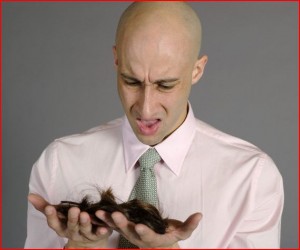
The distinction in the hair quality of different areas, such as the donor and recipient areas, allows for hair loss surgeons to remove the hair from one area and transplant it to the bald portions of the scalp. These newly transplanted hairs are permanent and immune to DHT. Finasteride (Propecia) is a drug which blocks the conversion of testosterone to DHT as a result of it blocking the enzyme alpha reductase. The amount of DHT in hair loss patients decrease when they are on Propecia and this helps to maintain healthy hair, and also helps some of the miniaturized hair become stronger.
We at US Hair Restoration often recommend medical treatment with DHT blockers in many of our patients who undergo a hair transplantation procedure in order to help maintain their own hair in addition to the newly restored, formerly balding areas because of a hair restoration surgery.
Tags: androgenetic alopecia, dht, DHT blockers, DHT receptors, dihydrotestosterone, female patterned baldness, finasteride, hair restoration surgery, propecia, testosteron
Posted in hair loss complications, Hair Loss Conditions, hair transplant, men hair restoration, women hair loss | No Comments »
Friday, October 7th, 2011
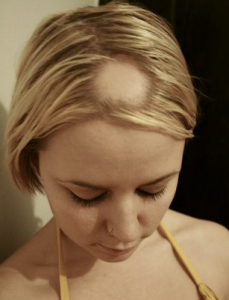 The autoimmune condition known as Alopecia causes hair loss in different areas of the body. These patchy, bald areas tend to look normal and don’t show any signs of inflammation or irritation. There is a genetic correlation found in some cases which can be linked to other autoimmune disorders. This particular form, Alopecia Areata, is most commonly a disease which is self-limiting, yet can be treated if necessary through steroid injections or topical medications by a dermatologist. The autoimmune condition known as Alopecia causes hair loss in different areas of the body. These patchy, bald areas tend to look normal and don’t show any signs of inflammation or irritation. There is a genetic correlation found in some cases which can be linked to other autoimmune disorders. This particular form, Alopecia Areata, is most commonly a disease which is self-limiting, yet can be treated if necessary through steroid injections or topical medications by a dermatologist.
The other form is known as Traction Alopecia which is common in children. This is a condition which is seen mainly in girls by having weak and fragile hair follicles. A common cause for this type of alopecia is tightly wrapped ponytails which in most cases affect the sides and front of the scalp. The initial sign of Traction Alopecia can be the elevation of the hairline. A way to treat this is by cutting the hair short and eliminating the strain the tightly wrapped hair causes on the follicles. The recovery time may take a few months and is spontaneous. In some of the longer term cases of Traction Alopecia, hair follicles are permanently damaged and a hair transplantation would be necessary to grow hair in the balding areas.
Tags: alopecia, alopecia areata, hair follicles, Traction Alopecia
Posted in Uncategorized | No Comments »
Friday, September 16th, 2011
There are times when patients suffering from the more advanced stages of balding require a second hair transplantation surgery to complete the process. The question many of these particular patients have is what the time lapse is between the first and second surgeries.
 This depends on if there is density which needs to be added to the already transplanted areas. If so, there needs to be at least six months which has passed since the original surgery. This is because after six months there is more complete growth from the first hair transplantation, and a touch up in the already transplanted areas will bring more complete results. The amount of hairs transplanted in the second surgery is typically less than the first since the scar from the first surgery is removed a second time. Overall, the greater the density in the transplanted areas, the better the hair restoration will look long term. This depends on if there is density which needs to be added to the already transplanted areas. If so, there needs to be at least six months which has passed since the original surgery. This is because after six months there is more complete growth from the first hair transplantation, and a touch up in the already transplanted areas will bring more complete results. The amount of hairs transplanted in the second surgery is typically less than the first since the scar from the first surgery is removed a second time. Overall, the greater the density in the transplanted areas, the better the hair restoration will look long term.
Tags: advanced stages of balding, hair transplantation surgery, second hair transplantation surgery
Posted in hair transplant, Hair Transplant Procedure, men hair restoration, Second hair transplant procedure, Uncategorized | No Comments »
Saturday, September 3rd, 2011
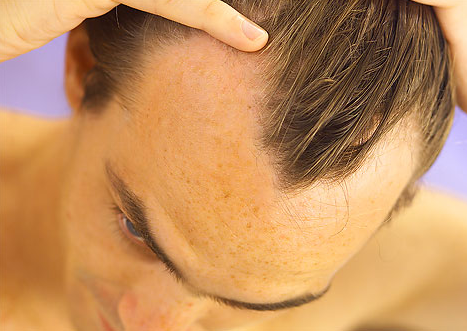 I am often asked questions by patients after their hair restoration surgery regarding how many transplanted hair grafts will fall out and never grow back. This question comes as a result of fear based on testimonies they have heard from patients who got a hair transplant several years ago from a different surgeon, at a time when the technology available was not as dependable as it is today. Also at times, they have heard of sad stories from the tabloids of celebrity hair restorations gone wrong. I am often asked questions by patients after their hair restoration surgery regarding how many transplanted hair grafts will fall out and never grow back. This question comes as a result of fear based on testimonies they have heard from patients who got a hair transplant several years ago from a different surgeon, at a time when the technology available was not as dependable as it is today. Also at times, they have heard of sad stories from the tabloids of celebrity hair restorations gone wrong.
At US Hair Restoration we pride ourselves on patient satisfaction, quality, up-to-date precise methods, and value. We at times get patients who have had hair loss procedures gone wrong from physicians using much older methods. They come to us to correct their past surgical errors and we gain their trust by giving them results which make them happy.
The fact of the matter is over 95% of transplanted hair grafts should permanently survive based on studies administered using microscopic follicular unit transplanted methods. These studies show anywhere from 95-99% are expected take hold and grow as healthy hairs within only a few months of a transplantation surgery.
Tags: celebrity hair restorations, follicular unit transplant, hair loss procedures, hair restoration surgery, hair transplant, transplantation surgery, transplanted hair grafts, us hair restoration
Posted in after hair transplant, hair transplant, hair transplant repair | No Comments »
Thursday, August 25th, 2011
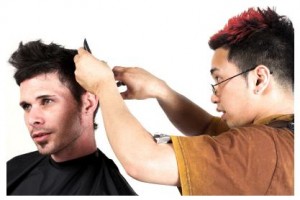 There are times when I receive inquiries as to why professionals such as hair stylists and dermatologists do not recommend hair restoration surgery to their clients or patients. I have scratched my head to this quandary as to why this is, since hair restoration surgery is the only method which is proven, permanent, and natural! The fact is, when it is done by a skilled hair restoration surgeon, the final product looks GREAT!!! There are times when I receive inquiries as to why professionals such as hair stylists and dermatologists do not recommend hair restoration surgery to their clients or patients. I have scratched my head to this quandary as to why this is, since hair restoration surgery is the only method which is proven, permanent, and natural! The fact is, when it is done by a skilled hair restoration surgeon, the final product looks GREAT!!!
In the past twenty years, hair restoration surgery has progressed significantly, but with the most noticeable changes happening in only the past five years. The most profound breakthrough in this time is the current method of dissecting hair grafts to maximize accuracy for long-term growth as well as the ability to transplant larger quantities of hair grafts (up to 5,000 in one sitting) which is known as a giga-session.
Unfortunately many stylists, and shockingly physicians as well, are not up to speed with modern hair transplantation techniques or the positive effects a surgery can have on their clients or patients. It is our goal at US Hair Restoration to continue to educate physicians, hair stylists, and the public about the science and art of current hair transplantation techniques.
We are intentional about inviting professionals such as physicians and hair stylists to hear about our services, witness a live surgery, and see life changing results just months after an operation. This knowledge helps them to be more informed of how to better direct their clients and patients. When it comes to hair and hair loss in general, hair stylists are seen as having great credibility for making suggestions. At US Hair Restoration we have a progressive campaign for educating them called the “LA’s Top Style List” and we believe our message will be made known.
Tags: dermatologists, giga session, hair grafts, hair loss, hair restoration surgery, hair stylists, hair transplantation techniques, LA’s Top Style List, modern hair transplantation techniques, us hair restoration
Posted in hair transplant, Hair Transplant Procedure, hair transplant repair, men hair restoration | No Comments »
Friday, August 5th, 2011
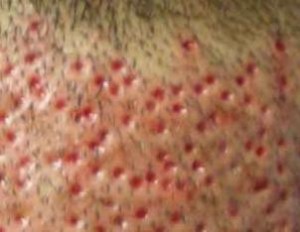 I am often given questions from patients regarding the Follicular Unit Extraction (FUE) procedure as to how it compares with the other procedures. The FUE is a method where hair is removed in single follicular units which is different than the strip method, which involved a large incision and dissection of strip into follicular units. There is a lot of information on the internet which do not recommend FUE procedures as oppose to many that promote it as the way of the future. In actuality, many surgeons and hair restoration facilities specialize in one method over another and might have bias to or against it. When the FUE is done properly, it has great results for many hair loss sufferers, mainly one’s with a minimum amount of hair loss. Some patients who cannot have the strip FUT (Follicular Unit Transplant) method, will find the FUE procedure to be very beneficial. I am often given questions from patients regarding the Follicular Unit Extraction (FUE) procedure as to how it compares with the other procedures. The FUE is a method where hair is removed in single follicular units which is different than the strip method, which involved a large incision and dissection of strip into follicular units. There is a lot of information on the internet which do not recommend FUE procedures as oppose to many that promote it as the way of the future. In actuality, many surgeons and hair restoration facilities specialize in one method over another and might have bias to or against it. When the FUE is done properly, it has great results for many hair loss sufferers, mainly one’s with a minimum amount of hair loss. Some patients who cannot have the strip FUT (Follicular Unit Transplant) method, will find the FUE procedure to be very beneficial.
Most transplant surgeries today are done through the FUT strip method for different reasons:
The strip method gives greater maximization of quality and viability of the hair follicles. The hair follicle transaction rate (grafts cut during surgery) could be higher with FUE method as oppose to strip technique. Larger surgeries of 4,000+ grafts can be done in one sitting with the strip method, where the FUE cannot get more than 1500 grafts per sitting. Larger FUE sessions also puts the healthy grafts outside of the body for a longer duration, thus making them more susceptible to losing health during the dissection and possibly dying in the process.
Modern technology in strip hair transplant has provided several methods which lower the visibility of scarring due to the FUT strip method. The FUE procedure is rather tedious, thus the cost of the surgery is greater. Ultimately, the best method is to be evaluated by a certified hair transplant surgeon who has knowledge and skill in both FUE and strip method and let him help you decide which method is best for you.
Tags: follicular unit extraction, fue, scar of hair transplant, strip hair transplant
Posted in donor scar, hair transplant | No Comments »
Sunday, July 10th, 2011
 There are two proven medical treatments for hair loss , aside from hair transplantation surgery, Minoxidil (Rogaine) and Finasteride (Propecia). The hair growth action mechanisms for Minoxidil are not completely understood, three main suggested mechanisms are: There are two proven medical treatments for hair loss , aside from hair transplantation surgery, Minoxidil (Rogaine) and Finasteride (Propecia). The hair growth action mechanisms for Minoxidil are not completely understood, three main suggested mechanisms are:
1. Blood Vessels in the scalp which are impacted by Nitric oxide chemical agonists
2. Hyperpolarization of the cell membrane of follicles caused by potassium channel openers
3. The effect of nitric oxide conceivably due to Vasodilation
A recent study was conducted by Korea’s Kyungpook National University’s Department of Immunology which was published in The Journal of Dermatological Science. It revealed a new Mechanism of Minoxidil which activates the Beta-Catenin pathway in derma papilla cells, which is one of the two different cells which aids in the growth and development of hair. It was announced by those performing the research that this particular mechanism may possibly be the reason for the anagen prolongation effect.
The duration of growth in the anagen phase (time of continual growth) is what develops hair length. The researchers underscored the fact maintenance of the activity of Beta-Catenin for the dermal papilla cells (DPCs) aids hair follicles to actively grow. Minoxidil (Rogain) gives growth remedy for male pattern baldness which suggests it can enhance the growth phase in the life cycle of hair.
A mouse model was used for the study using 3% minoxidil for a ten day duration. Beta-Catenin responsive TCF reporter plasmid was used to transfect DPC’s. The results revealed the anagen phase was extended significantly after the use of minoxidil. The researchers came to the conclusion minoxidil prolongs the activating Beta-Catenin anagen phase in DPC’s and has the potential to be a primary pathway for hair growth or the prevention mechanism for hair loss.
A study like this helps to enhance our comprehension of hair loss and growth. Over time this can help the field of hair restoration providing more options to confront hair loss with greater sufficiency.
Tags: anagen, Dermal Papilla, DPC, growth phase, minoxidil, minoxidil mechanism, nitric oxide, vasodilation, β-catenin
Posted in hair loss medication, hair loss products, men hair restoration | No Comments »
|
|
 It is most common for people consider hair transplant surgery as one remedy for hair loss and balding, which is true in most cases. Modern day hair restoration is the only natural, permanent and proven treatment option for hair loss, which continues to improve the lives of thousands of individuals every year.
It is most common for people consider hair transplant surgery as one remedy for hair loss and balding, which is true in most cases. Modern day hair restoration is the only natural, permanent and proven treatment option for hair loss, which continues to improve the lives of thousands of individuals every year.


 Hair loss and hair thinning is a result of testosterone formed in different areas like the prostate gland or hair follicles, which is converted to Dihydrotestosterone (DHT) in the scalp area. Hair follicles prone to genetic male patterned baldness contain DHT receptors, thus thinning hair and loss of hair can result. Over time men produce an abundance of DHT and the molecules affect their hair follicles and cause a decrease in size and eventually see their natural hair fall out permanently. Because of this common occurrence, hair loss in men is frequent.
Hair loss and hair thinning is a result of testosterone formed in different areas like the prostate gland or hair follicles, which is converted to Dihydrotestosterone (DHT) in the scalp area. Hair follicles prone to genetic male patterned baldness contain DHT receptors, thus thinning hair and loss of hair can result. Over time men produce an abundance of DHT and the molecules affect their hair follicles and cause a decrease in size and eventually see their natural hair fall out permanently. Because of this common occurrence, hair loss in men is frequent.

 This depends on if there is density which needs to be added to the already transplanted areas. If so, there needs to be at least six months which has passed since the original surgery. This is because after six months there is more complete growth from the first hair transplantation, and a touch up in the already transplanted areas will bring more complete results. The amount of hairs transplanted in the second surgery is typically less than the first since the scar from the first surgery is removed a second time. Overall, the greater the density in the transplanted areas, the better the hair restoration will look long term.
This depends on if there is density which needs to be added to the already transplanted areas. If so, there needs to be at least six months which has passed since the original surgery. This is because after six months there is more complete growth from the first hair transplantation, and a touch up in the already transplanted areas will bring more complete results. The amount of hairs transplanted in the second surgery is typically less than the first since the scar from the first surgery is removed a second time. Overall, the greater the density in the transplanted areas, the better the hair restoration will look long term.


